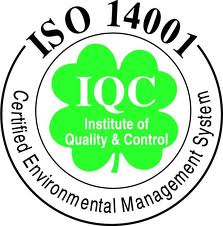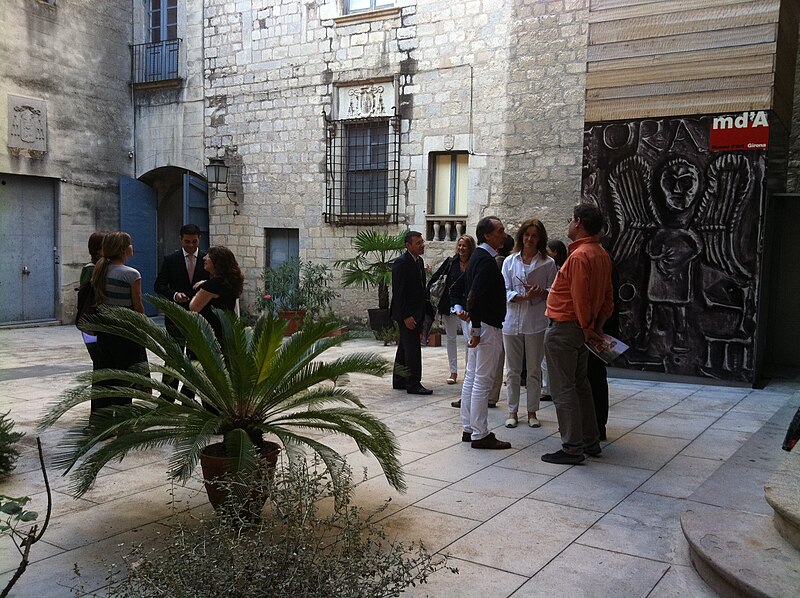 The second Culture and Environment Conference took place on 27/09, organized by the Fundació Pau Casals and the Museu d’Art de Girona. We took part with the aim of seeing how other institutions are working in the context of environmental management.
The second Culture and Environment Conference took place on 27/09, organized by the Fundació Pau Casals and the Museu d’Art de Girona. We took part with the aim of seeing how other institutions are working in the context of environmental management.
The focus of the talks was very varied, from more theoretical to more technical and practical. They addressed various aspects, ranging from the history of the implantation of environmental management systems in Catalonia to practical examples of action in institutions of differing characteristics and sizes.
Assumpta Farran, Director General of Environmental Quality of the Department of Territory and Sustainability, opened the conference by talking about the history of the implantation of environmental management systems in Catalonia. It started in industry, and it was not until around 2000 that it began to extend to the service sector (principally tourism). In around 2007, cultural institutions began to come under analysis with attempts to incorporate environmental issues into everyday running and work towards environmental certification.
 Environmental certification basically involves complying with ISO 14001 and EMAS standards. To obtain this certification, an institution has to prove that its management is based on quality and sustainability. Núria Ballester, director of the Vil·la Museu Pau Casals (the smallest institution to have obtained certification in Catalonia), talked about the legal aspects that all public facilities have to comply with and others that are required for certification (ISO 9001, ISO 14001 and EMAS).
Environmental certification basically involves complying with ISO 14001 and EMAS standards. To obtain this certification, an institution has to prove that its management is based on quality and sustainability. Núria Ballester, director of the Vil·la Museu Pau Casals (the smallest institution to have obtained certification in Catalonia), talked about the legal aspects that all public facilities have to comply with and others that are required for certification (ISO 9001, ISO 14001 and EMAS).
The most important legal requisites include environmental licensing, revision of electronic apparatus, emergency plans, waste management, and the control of noise pollution, emissions, industrial installations (air-conditioning, lifts, compressors, etc), and pests and microorganisms.
Then, Carme Martinell i Callicó, of the Museu d’Art de Girona, explained how the museum implanted systems first of quality management to obtain ISO 9001 certification and then of environmental management to obtain ISO 14001-EMAS certification. It has developed a whole new organizational system aimed at quality and sustainability.
As regards the method to be followed to meet legal requisites and implement the management plan, Sandra Roses, Head of Environment at the Museu de Montserrat, talked about the need to establish procedures to detect control and correct, as necessary, operations that may have a significant impact on the environment.
 II Jornada Cultura i Medi Ambient. Photo: Kippelboy
II Jornada Cultura i Medi Ambient. Photo: Kippelboy
The Museu de Montserrat employs a mathematical formula (Magnitude x Frequency x Severity) to evaluate environmental aspects and determine the main aspects requiring control and monitoring. This produces records of consumption of water, and energy and fuel, allowing them to draft preventive maintenance plans for installations and implement saving systems. All the results have to be measurable in order to ensure that the corrective measures taken are effective. The museum also has a waste management plan and a test to control emissions and hazardous products that may be used there.
Going into even more detail, it is interesting to hear about some of the specific projects implemented by management plans. Ramón Gonzalez, Head of Maintenance at the Fundació Miró, gave a detailed presentation of the energy-saving project the foundation is carrying out in lighting.
To optimize lighting, they have replaced all the spotlights (some 600) with dimmable lights, and optimized lighting time in the galleries by means of an automated time-controlled lighting system and the power absorbed by each apparatus by introducing energy-saving light bulbs. They are also conducting a pilot scheme in one gallery, where energy-saving bulbs are replaced by LEDs, so they can analyse the real life of the light bulbs, their light quality and the way they affect viewing of the artworks.
 II Jornada Cultura i Medi Ambient. Photo: Kippelboy
II Jornada Cultura i Medi Ambient. Photo: Kippelboy
Another practical case was presented by Xabier Abelló, Head of Maintenance at the MNAC, who explained the main aspects of the Waste Management Plan the museum developed and implemented in 2010 and 2011. It includes an initial phase of evaluation and a second phase of development and planning of waste separation. It also proposes and lists the future phases of prevention to be introduced in 2012.
Representatives of AENOR were also present. They see these standards as a check list to help institutions establish management systems and facilitate activity and control of their actions. AENOR considers this a task already being carried out at the principal cultural institutions, with a gradual appreciation of the need for generalized implantation.
They also proposed a second step consisting of work on indirect aspects, such as employing cultural institutions as sounding boards to encourage this kind of practice by publicising their work on environmental issues. This would involve communicating the environmental actions carried out (by means of educational programmes and publicity campaigns), and covering these aspects in contracts with third parties.
On the subject of the talk by the AENOR representative, Manel Guerrero, of the Centre d’Arts Santa Mònica, spoke about public participation and channels of communication. He outlined the communication and participation actions implemented at Arts Santa Mònica to publicise the centre’s environmental management plan. The educational programmes also promote themes related to the environment.
Worker participation is one of the strands in the success of the environmental management plan. Initially, the centre chose a coordinator and an environment technician from the staff as central agents of project development, followed by information campaigns to involve all staff members, each in his or her specific field of action.
In the question and answer session, Josep Maria Masip of the Directorate General of Environmental Quality talked about the department’s work to create an environmental quality award as a first step towards certification. The aim is to acknowledge institutions that are establishing guidelines for sustainability but have not yet obtained certification. He also talked about the existence of grants to companies working towards certification (or, in this case, the environmental quality award). None were awarded in 2011, but it is hoped that the system will recommence in 2012.
 Salvador Cardús a II Jornada cultura i medi ambient. Photo: Kippelboy
Salvador Cardús a II Jornada cultura i medi ambient. Photo: Kippelboy
All the speakers agreed that the implementation of management systems for both quality and environment and safety is a top-down project that has to start with the management level of an institution and reach and involve the entire staff. They also agreed that obtaining certification is the start of an ongoing process rather than the objective in itself.
Finally, Salvador Cardús contributed an external view of the social responsibility of cultural institutions, not just in environmental issues but also as promoters of change and adaptation to the new socio-political scene or as creators of citizenship and identity.
This type of meeting is vital both for showcasing experiences and exchanging knowledge with other professionals in the culture sector, and bringing together institutions that are working towards the same aims.








Vale, quan ens posem a treballar al CCCB?